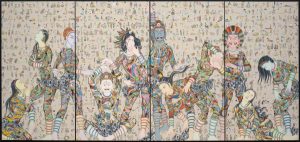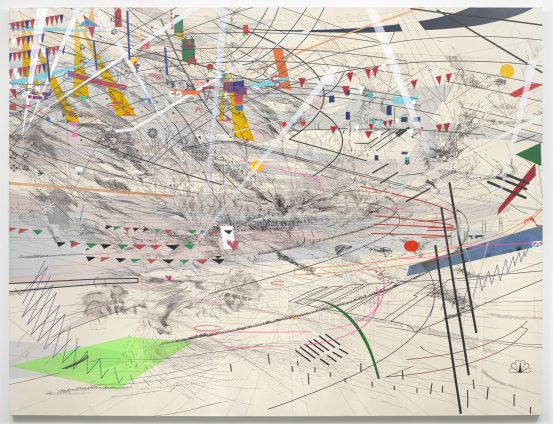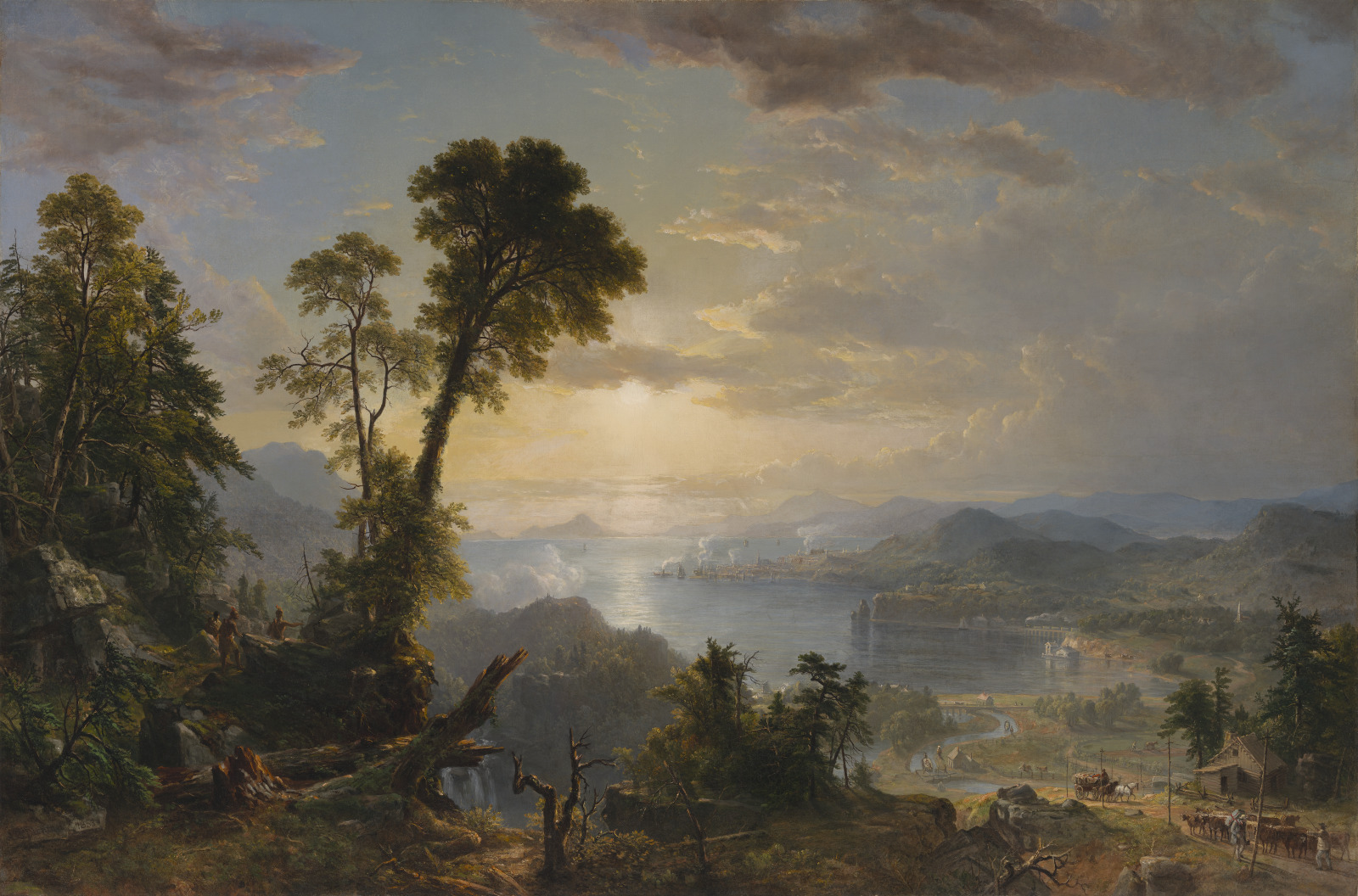
SEL at VMFA
VMFA’s comprehensive and diverse collection is rich with examples of artworks that can serve as catalysts for fostering core competencies of Social and Emotional Learning (SEL). This object set provides teachers with an introduction to some of these artworks, providing contextual information, connections with core SEL competencies, and suggested engagement exercises.
Introduction
Though distinct acts, the making and viewing of artworks foster complementary Social and Emotional Learning competencies. In the expressive act of making, artists are able to work out ideas, often related to understanding self, community, or the world. Viewers encountering an artwork are invited to a similar task of self-reflection as they make sense of what they see.
VMFA’s comprehensive and diverse collection is rich with examples of artworks that can serve as catalysts for fostering core competencies of Social and Emotional Learning (SEL). This object set provides teachers with an introduction to some of these artworks, providing:
- Contextual and background information for select art objects,
- Related SEL core competencies based on definitions by the Collaborative for Academic, Social, and Emotional Learning (CASEL) and in alignment with Virginia Social Emotional (SEL) Guidance Standards.
- Suggested guided looking exercises to prompt student engagement, ideation, and self-reflection.
- Additional collection objects to explore.
Self-Awareness
Stadia III, Julie Mehretu
Julie Mehretu made the monumental painting Stadia III in 2004. Viewers encountering the work see a myriad of colors and dynamic marks. Abstract and representational imagery work in tandem to offer a rewarding interpretive challenge.
The artist has said that a growing self-awareness is part of her artistic process. In a 2008 interview with Susan Sollins of Art21, Mehretu noted “You have all this experience that determines who you are, and you can’t change that too much. You know you can only get to know yourself better, understand yourself better, and evolve and try to grow. That’s how I am with my work—trying to push and understand what I make and why I make it the way that I do.”
Viewers of the painting may also grow in self-awareness. Interpreting artworks that present ambiguity or challenge assumptions, as Stadia III does, can help students recognize their own emotions, influences, ideas, and attitudes. As they articulate their responses to the art, they may use vocabulary that reveals an understanding, a stance, or even personal references.
Stadia III belongs to a series of three Stadia paintings that address the theme of mass spectacle. Conceived in the wake of the U.S.-led invasion of Iraq in 2003, the series reflects Mehretu’s fascination with television coverage that transformed the war into a kind of video game—as many at the time commented—and in the spectrum of nationalistic responses that she witnessed during travels to Mexico, Australia, Turkey, and Germany. The series also reflects her interest in the international buildup to the 2004 Summer Olympics in Athens.
Relationship Skills
Painted in 1853, Asher B. Durand’s celebrated painting Progress (The Advance of Civilization) features a conceptual rather than actual American landscape. To make sense of the image viewers must navigate and unpack abundant visual information. Doing so with others can be a valuable exercise.
Viewers may be struck by how Durand positioned the elements of the scene. This arrangement may lead the viewer’s eye from the lower left of the canvas across to the upper right. This visual progression echoes a changing United States landscape culminating in a busy port city accessible by railroad, steamship, and telegraph line.
The various inhabitants of this imagined landscape are also compelling. Students might discuss the point of view of the Indigenous Americans looking out over the vista from a seemingly untouched wilderness. What about the driver of a laden horse-drawn cart making its way up a road cut from the landscape or the farmer working the land with a horse-drawn plow? Unseen, but also important to consider, are the factory workers, steamboat captains, telegraph operators, churchgoers, merchants, railroad workers, as well as the inhabitants of all the buildings.
The artist himself had to exercise considerable relationship skills to make the painting as he balanced his own ideas with those of the patron who paid for it. Durand was one of the leading landscape painters of his time. His work celebrated what he saw as the spiritual beauty of the American wilderness even as it was threatened by modernity. Progress was commissioned by financier, industrialist, and collector Charles Gould, who shortly thereafter became broker and then treasurer for the Ohio and Mississippi Railroad. A patron of the arts, Gould may have been more interested than Durand in showing the impact of industrial advancements in a favorable light.
Suggested Exercises and More Objects to Consider
Social Awareness

Himalayan Spirits, 2021, Tsherin Sherpa , born 1968. Tsherin Sherpa, (born 1968) Gold, acrylic, and ink on canvas. Virginia Museum of Fine Arts, Arthur and Margaret Glasgow Endowment and the following, by exchange: Nasli and Alice Heeramaneck Collection, Gift of Paul Mellon; Gift of Miss Frances Leigh Williams in memory of her brother, Archer Anderson Williams; Gift of the Estate of Mrs. Mary Safford Hoogewerff; and Gift of Mr. George P. Bickford, 2022.74a-d
Artists may present traditional imagery in new ways as they explore their own cultural contexts and identities. In turn, their work may spark curiosity in the viewer and foster an awareness of diverse perspectives.
Viewing Tsherin Sherpa’s large composition Himalyan Spirits is intended to be an interaction of sorts. The artist has likened the assembly of colorful figures to the grand finale and curtain call of a theatrical performance. He imagines the group of eleven as an incomplete troupe of twelve, its final member being the person who stands before the painting. As the artist, then, he is present in the work, but so is every viewer invited to join in the spirited gathering.
Trained as a traditional Tibetan thangka painter, Sherpa later developed his Spirits series of contemporary artworks which feature figures that resemble Tibetan Buddhist deities transformed and transported to novel settings. The artist has compared the composition of this monumental painting to Kathmandu’s billboards advertising Bollywood movies, which he remembers from his youth. The main characters—a diverse group of Spirits—are pushed to the front, while small supporting scenes fill the background. Sherpa has described these background images—myriad faceless figures engaged in everyday activities—as his nostalgic mental image of Nepal, imprinted from childhood.

















